Don’t know the first thing about Designing a Container Garden? Follow these Container Garden Design Tips to create amazing container gardens!
Here are Container Garden Design Tips so you can organize your lovely foliage and create a beautiful one for your home. Designing a Container Garden is quick and easy with our expert tips.
Container Garden Design Tips
1. Go with Shrubs or Trees
When designing container garden ideas, consider adding a lovely shrub or tree to a big and unique container. Put it in a central spot to make it stand out as the main attraction. You can also plant a shorter plant around its base to make it more charming or let it be by itself for a striking look.
Here are some amazing shrubs and trees perfect for a container garden.
- Japanese Maple (Acer palmatum): Delicate foliage and vibrant colors make it a captivating choice.
- Dwarf Conifers (Various species): Evergreen, compact, and available in various shapes and hues.
- Ornamental Grasses (Various species): Add texture and movement with their graceful appearance.
- Rose Bushes (Rosa): Elegant blooms and a variety of colors for a classic touch.
- Hydrangea (Hydrangea): Big, showy blooms that bring a splash of color.
- Boxwood (Buxus): Dense foliage provides a structured, timeless look.
- Dwarf Weeping Willow (Salix): Graceful, trailing branches for a unique touch.
- Citrus Trees (Citrus): Fragrant blooms and fruit add both beauty and functionality.
Best Citrus Trees for Containers (Growing Citrus In Pots)
2. Choose the Best Location
Selecting the optimal spot for your focal point container is crucial in creating a captivating container garden design. Placing it strategically can draw attention and elevate the overall aesthetic of your container garden.
Don’t know how to arrange garden pots? Here are some tips for placing your container garden to create a beautiful focal point.
- Choose a Central Location: Pick a spot in your garden where the container will catch the eye easily. This could be near an entrance, on a patio, or in the middle of a garden bed.
- Height and Elevation: If possible, elevate your container slightly to add dimension. Placing it on a pedestal or stand can make it more noticeable.
- Balance with Surroundings: Ensure the size of the container complements the surrounding plants and structures. It shouldn’t look too small or too overpowering.
- Play with Lighting: If you have outdoor lighting, position the container where it gets illuminated at night. This can create a captivating visual effect after dark.
Remember, the focal point container is like the star of your garden show – make it shine!
3. Adding Depth with Height
Incorporating varying heights within your container garden is among the top container garden design tips. Utilize plant stands to raise some containers off the ground or repurpose pots and inverted buckets as makeshift bases for others.
This technique not only showcases plants at different eye levels but also introduces engaging multi-dimensional container garden ideas.
Don’t limit yourself to just one or two containers – spread the beauty by scattering multiple pots throughout your garden space. This will add to the visual splendor and enable you to experiment with diverse plant combinations and textures.
If you have no idea how to arrange garden pots, follow these tips. For larger and heavier pots, opt to place them directly on the ground, anchoring them with a sense of stability that complements the container garden plans.
Best Shrubs for Containers | Best Container Gardening Plants
4. Create Harmonious Plant Groups
Grouping plants based on their height is a smart way to craft a garden that feels naturally inviting. Using these container garden design tips thoughtfully, you can achieve a balanced and pleasing visual arrangement.
Arrange taller plants and trees towards the back of the container and position shorter, low-growing plants in the front. This arrangement replicates the beauty of a natural garden scene, adding depth and dimension to your container garden plans.
Plant Ideas for a Container Garden
- Tall Thrillers with Groundcover: Pair tall plants like ornamental grasses or upright shrubs with a low-spreading groundcover like creeping thyme or sedum.
- Vertical and Cascading Contrast: Combine tall, vertical plants such as foxgloves or salvia with trailing, cascading plants like ivy or million bells.
- Focal Point with Surrounding Blooms: Place a focal point tree or shrub in the center and surround it with smaller flowering plants like pansies or petunias.
- Layered Heights with Herb Garden: Arrange taller herbs like rosemary or lavender at the back, medium-height herbs like basil or parsley in the middle, and low-growing herbs like thyme or oregano at the front. These are the best choices if you’re looking for a container garden for herbs.
- Grasses and Perennials: Mix ornamental grasses with perennials of varying heights, creating a dynamic and textured look.
5. Opt for Pedestrals and Massive Planters
Elevate the appeal of your container garden by strategically using pedestal pots or stands. This clever technique directs attention to the captivating foliage and delicate blooms that could otherwise go unnoticed.
Place plants with intricate leaves or charming flowers on these pedestals to bring them to eye level, ensuring that their beauty becomes a focal point in your garden.
Through the thoughtful placement of pedestal pots or stands using one of the best container garden design tips, you can highlight the intricate details of your plants, transforming overlooked features into the star attractions of your container garden.
6. Conceal the Unattractive Elements
Worried about how to arrange garden pots? Transform the look of your container garden by using a simple yet effective technique – positioning containers strategically to hide unsightly pots, stands, bland wall, bench, and plant stands.
By placing attractive containers in front of these less appealing elements, you can instantly elevate the visual appeal of your garden.
Container Garden Design Tip: By placing containers in front of unattractive elements, the focus shifts to the beautiful plants, making them appear more substantial than they actually are. Employ this tactic to your advantage to add depth and scale to your container garden.
7. Group Plants by Watering Needs
Make watering your container garden a breeze by grouping plants that share similar water requirements. By following these container garden design tips, you will streamline your maintenance routine and ensure that each plant receives the right amount of hydration, promoting its health and vitality.
By arranging your plants based on their water needs, you’re setting yourself up for a more manageable and successful container water garden. Here are some combos to get you started.
- Drought-Tolerant Trio: Combine succulents like echeverias, sedums, and hens and chicks in a succulent container garden for an easy-to-care-for arrangement.
- Moisture-Loving Mix: Pair ferns, impatiens, and coleus in a container placed in a shady spot that stays consistently moist.
- Cacti and Friends: Create a desert-themed container with cacti, agave, and aloe vera for a low-water oasis.
- Herb Harmony: Group herbs like rosemary, thyme, and sage that share a preference for well-draining soil and moderate watering.
- Grasses and Gravel: Mix ornamental grasses with gravel-loving plants like lavender or verbena to create an attractive, water-efficient display.
How To Water Plants + 5 Watering Mistakes You’re Doing
8. Get More by Going Vertical
Extend your container garden beyond the ground level by embracing vertical space. Hanging baskets are a brilliant way to make the most of unused overhead areas, whether it’s a balcony, porch, or even a garden fence.
These suspended containers not only create an enchanting visual display but also allow you to introduce a wider variety of plants into your garden.
Cascading flowers, trailing vines, or lush ferns can spill gracefully from hanging baskets, turning your garden into a captivating tapestry of textures and colors.
Embracing container garden design tips doesn’t stop at hanging baskets – consider wall-mounted containers as well. Vertical planters affixed to walls or fences provide a fantastic canvas to display an array of plants in a space-efficient manner.
Urban Vertical Gardening Ideas For Small Spaces
9. Mix and Match for a Captivating Container Garden
By thoughtfully combining plants with varying textures, you can create a harmonious yet attention-grabbing composition that keeps the eye engaged. The tactile quality of leaves and foliage adds an extra layer of visual interest, turning your garden into a multi-sensory experience.
Dynamic Contrasts
- Smooth and Spiky Contrasts: Blend the smooth, rounded leaves of echeverias or sedums with the sharp spikes of agaves or aloes. This combination of textures not only pleases the eye but also offers an exciting experience.
- Soft and Bold Drama: Merge the soft, feathery fronds of ferns with the bold, structural leaves of elephant ears. This combination adds depth to your garden while showcasing a stunning textural interplay.
Layered Foliage
- Fuzzy and Glossy Balance: Intermingle the velvety texture of lamb’s ear with the glossy sheen of rubber plants for a delightful tactile and visual contrast.
- Crisp and Wispy Harmony: Combine the crisp foliage of ornamental grasses like maiden grass with the wispy, airy nature of baby’s breath for a garden arrangement that captures both light and touch.
Sensory Delights
- Succulents and Sedges Mix: Pair the plump and fleshy leaves of succulents with the fine, grass-like texture of sedges for a pleasing blend of lushness and subtlety.
- Velvet and Lace Ensemble: Play with the velvety feel of pansy leaves alongside the intricate, lacy foliage of sweet potato vines for a garden that invites exploration.
10. Privacy with Hedging and Tall Plants
Looking for unique container garden design tips? Enhance the privacy of your outdoor sanctuary by strategically incorporating hedging and tall plants like bamboo, conifers, or ornamental grasses along the sides of your container garden.
By placing taller plants at the perimeters of your container garden, you not only establish a natural shade container garden but also create an optical illusion that makes the garden appear more expansive. This clever trick enhances the perception of space, making patio container garden ideas feel larger and more open.
Here are Beautiful Indoor Privacy Ideas with Plants
Here are some tall plants that are well-suited for creating privacy and enhancing the illusion of space in your container garden.
- Bamboo (Various species): Fast-growing and dense, bamboo offers excellent privacy screening and a soothing rustling sound in the breeze.
- Conifers (Various species): Evergreen conifers like arborvitae or juniper provide year-round coverage and a natural backdrop.
- Grasses (Various species): Ornamental grasses such as miscanthus or pampas grass offer graceful movement, texture, and privacy.
- Canna Lily (Canna indica): With tall stalks of vibrant foliage and flowers, canna lilies can create a striking barrier.
- Tall Phlox (Phlox paniculata): Fragrant blooms on tall stems provide both privacy and a burst of color.
11. Enhance Beauty and Utility with Edible Plants
By incorporating herbs, compact vegetables, or fruit-bearing plants using these container garden design tips, you create an engaging visual display. Who doesn’t love a source of fresh and delicious ingredients right at their fingertips?
Herbs as Living Decor
Enrich your garden’s ambiance with the vibrant colors and fragrant scents of culinary herbs like basil, mint, or rosemary. These versatile plants not only add an inviting sensory dimension but also enhance your culinary creations as they are the cheapest container garden ideas.
Small-Scale Vegetables
Transform your container garden into a container vegetable garden by planting compact vegetables like cherry tomatoes, peppers, or lettuce. Not only do these plants offer striking colors and textures, but they also yield tasty rewards for your table.
Fruitful Displays
Incorporate fruit-bearing plants like strawberries, blueberries, or dwarf citrus trees to add pops of color and a touch of sweetness to your garden. These plants offer a delightful blend of beauty and productivity to your outdoor or indoor container garden.
By weaving edible plants into your container garden’s design, you’re not only cultivating an exquisite visual masterpiece but also enriching your container garden plans with flavors, aromas, and the joy of harvesting your own homegrown goodness.
Best Wild Edible Plants in Georgia that Also Grow in Garden
12. Pick a Theme or Go Monochrome
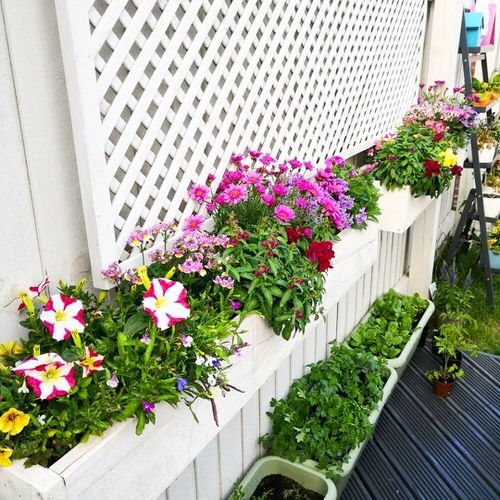
Designing your front yard container garden ideas around a specific theme, be it a charming cottage garden or a serene tropical oasis, offers a cohesive and captivating narrative to your outdoor space.
This deliberate selection of plants, textures, and structures creates a living canvas that speaks to your artistic vision.
You can also experiment with containers for gardening ideas using monochromatic schemes for a soothing, harmonious vibe or venture into complementary colors to generate a dynamic contrast.
By taking note of container garden design tips, you can infuse your deck container garden with your unique style.
13. Perfect the Plant-Pot Pairings
By artfully pairing contrasting flowers and foliage plants with specific pot types or colors, you can create a striking synergy that amplifies the overall visual impact of your container flower garden.
Don’t know the first thing about selecting containers for gardening ideas? Go with the following.
- Copper Pots: Pair these pots with deep-colored foliage plants like burgundy heuchera or vibrant blooms like orange marigolds.
- Cement Pots: Contrast the cool gray tones of these pots with bright and cheerful flowers like pink petunias or purple verbena.
- Metal Pots: Pair these metal garden containers with plants that have silver-hued leaves, such as dusty miller or lamb’s ear.
- Clay Pots: Contrast these pots with the bold and vibrant colors of zinnias or dahlias.
- Black and White Pots: Pair black pots with pale pink geraniums for a classic yet contemporary contrast. Alternatively, white pots paired with blue lobelia create a crisp and refreshing look that evokes a sense of calm.
Container Garden Tip: You can also go for raised garden bed containers if you have plenty of lawn space. With a natural look, these versatile beauties will go with all your favorite plants.
14. Harmony with the Spiller-Filler-Thriller Technique
Spiller-Filler-Thriller is undoubtedly one of the top choices when it comes to container garden design tips. This clever approach involves combining plants with distinct growth habits to achieve a harmonious and captivating arrangement that elevates the appeal of your garden.
Thrilling Focal Points
Begin by selecting a captivating thriller plant – one that boasts height, drama, and a strong visual presence. Examples include tall ornamental grasses, vertical bloomers like salvia, or even upright begonias.
These plants become the focal points that draw the eye and anchor the composition of your DIY container garden.
Filling the Gaps
Next, introduce filler plants – those with medium height and a bushy, rounded growth pattern. These plants provide volume and help to fill out the container.
Consider plants like petunias, coleus, or dwarf dahlias. The fillers serve as the bridge between the thrillers and the spillers, contributing to the overall fullness of the arrangement.
Cascading Beauty of Spillers
Complete the trio with spiller plants that gracefully cascade over the edges of the container, softening its lines and adding a touch of whimsy. Trailing plants like ivy, sweet potato vine, or lobelia work wonders in this role.
The spillers create a dynamic contrast to the upright thrillers while contributing movement and an element of enchantment.
Have a look at the best Best Spiller Filler Thriller succulent ideas here
15. Give Chance to Succulents
Succulents in containers can add a unique charm to any garden, providing a focal point of interest, texture, and color. Here’s how they can light up a garden, along with some suggestions for the best combos for pots.
- Visual Appeal: Their distinct shapes, colors, and textures create visual interest and can add an artistic touch to any space.
- Versatility: Available in various sizes, succulents can fit into different types of containers, allowing for creative placement throughout the garden.
- Low Maintenance: Requiring minimal care, they’re ideal for both beginners and busy gardeners. Their drought tolerance makes them environmentally friendly as well.
- Seasonal Interest: Some succulents bloom, offering seasonal color and attracting pollinators.
- Thematic Gardens: They allow for themed gardens, such as desert landscapes or zen gardens, providing unique garden experiences.
Best DIY Vertical Succulent Garden Ideas
Best Combos for Pots
Combining different types of succulents in one pot creates a visually stunning effect. Some good examples include:
- Echeveria with Sempervivum: Offers contrasting rosette shapes and colors.
- Aloe Vera with Haworthia: Mixes spiky textures with intricate patterns.
- Crassula (Jade Plant) with Sedum: Complements each other’s growth habits.
Mixing succulents with other plants can create engaging contrasts:
- Portulaca with Ornamental Grasses: Combines succulent blooms with soft, wispy grasses.
- Aeonium with Ferns: Pairs rosettes with the delicate texture of ferns.
Vertical planters or wall gardens with succulents like Sempervivum and Sedum can add an eye-catching element if you’re looking for unique containers for gardening ideas!

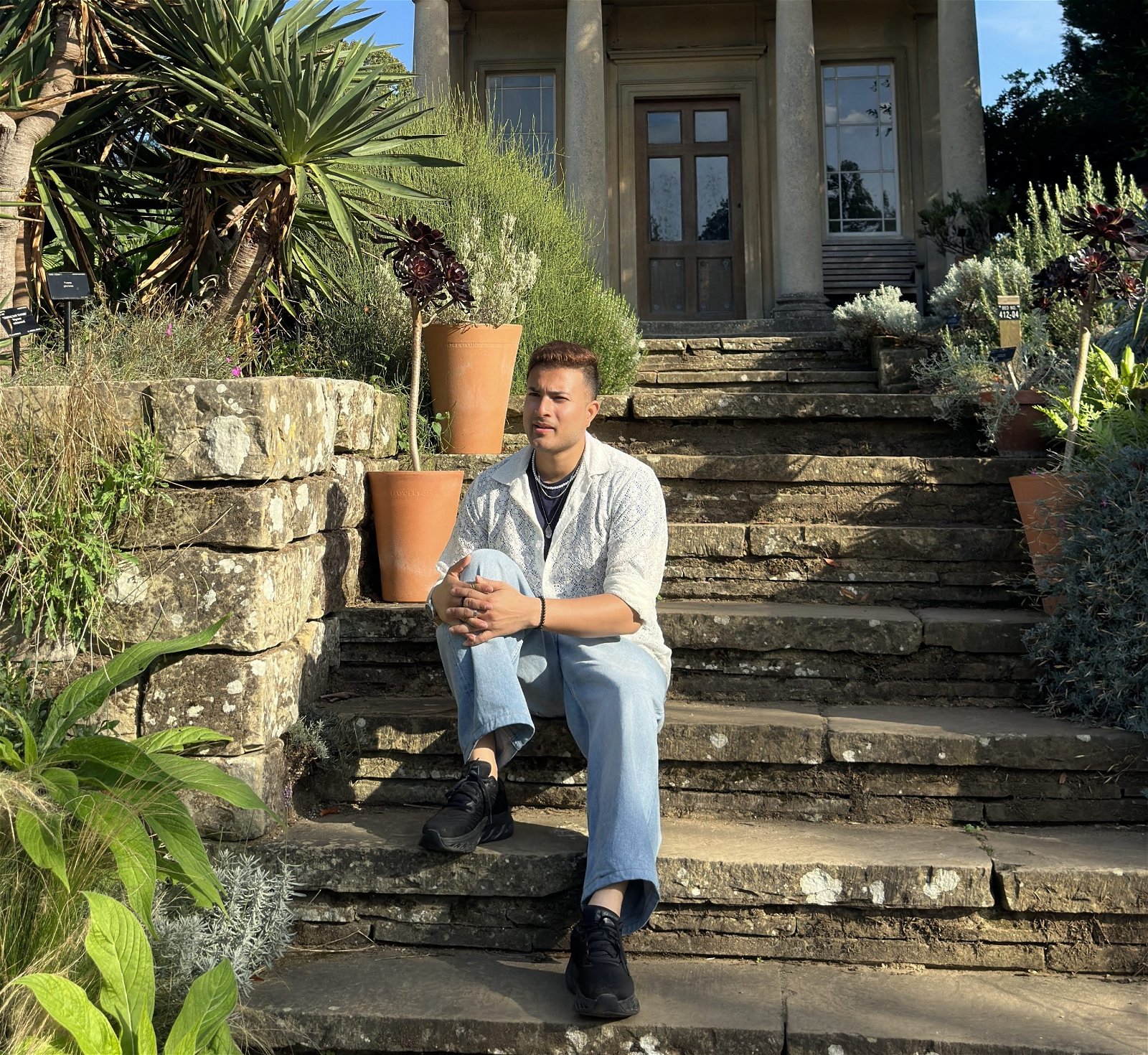
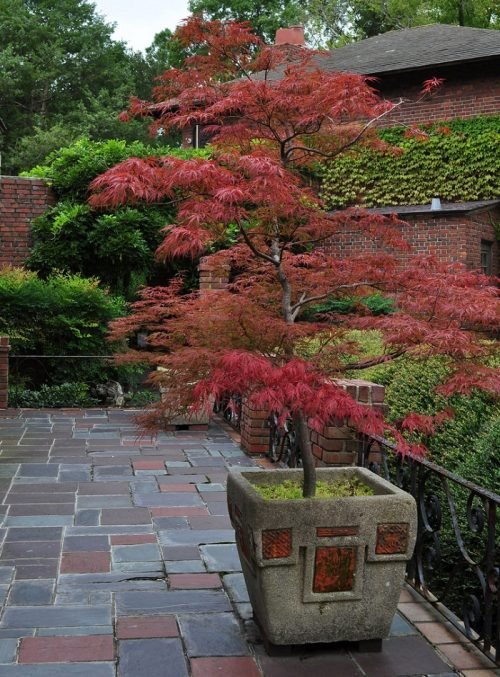
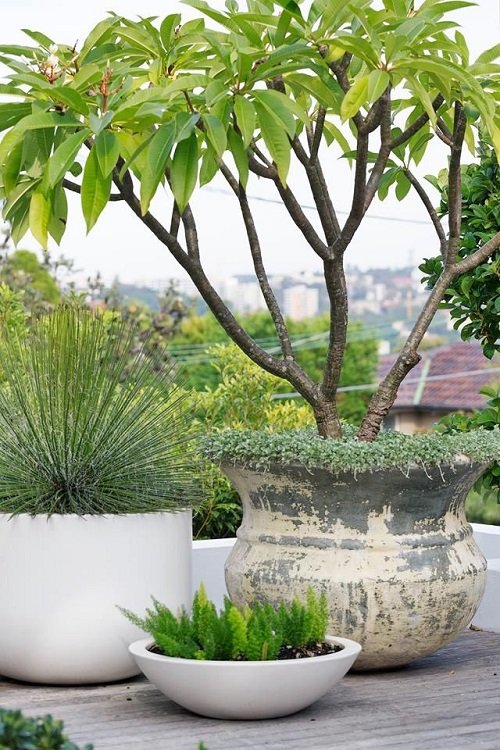
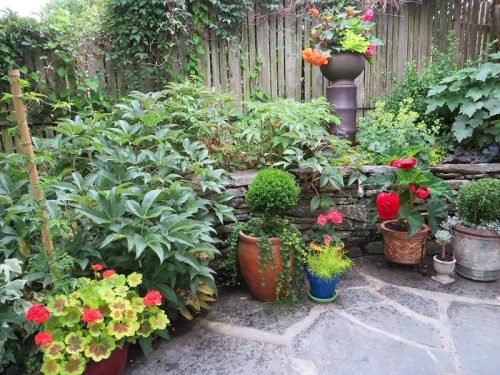
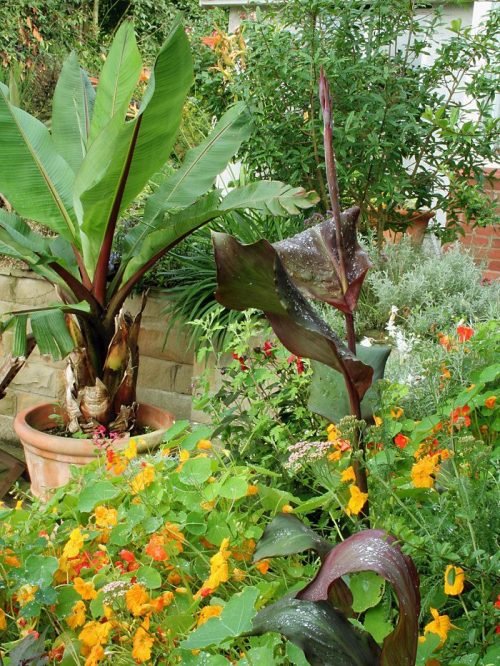
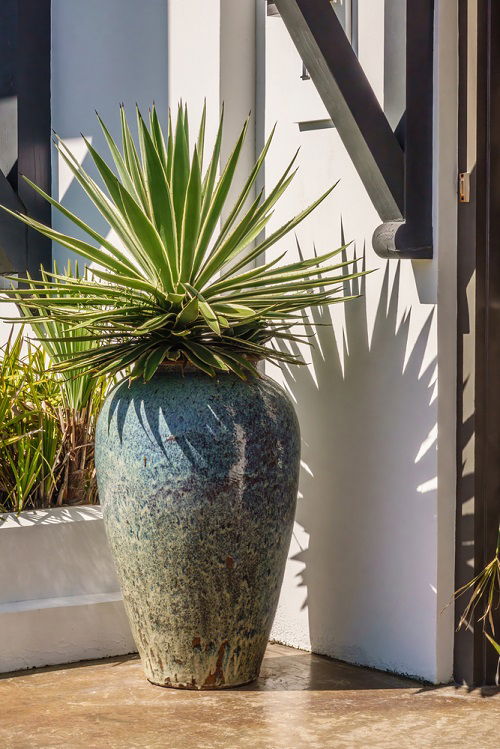
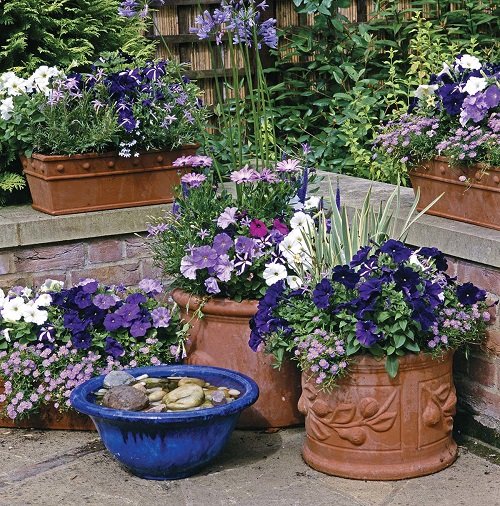
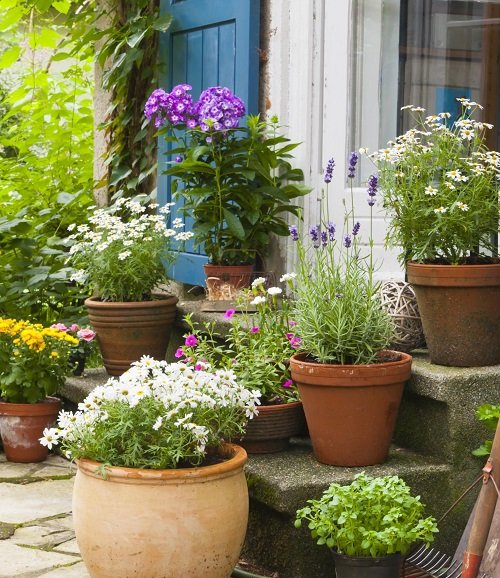
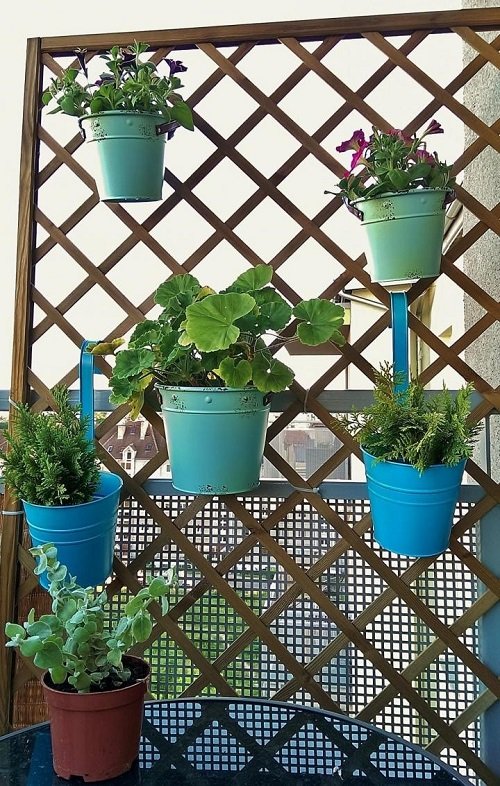


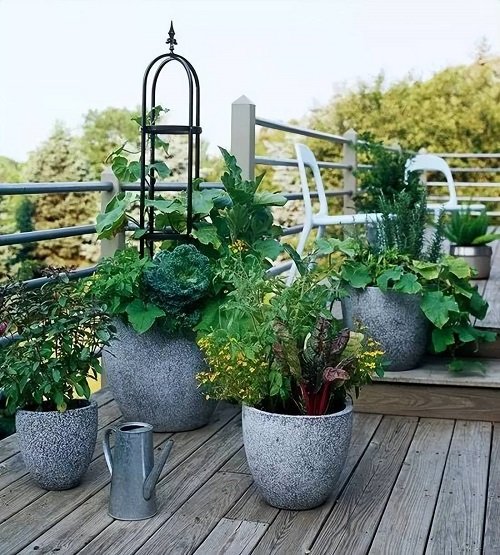

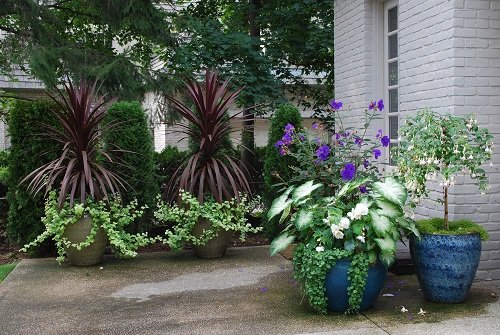


No one really tells you how to plant a large decorative planter with more than one plant. I bought two huge (24″ outside dimension) obscenely expensive planters for my front porch and I want to plant a tree with trailing plants like I see in all the pretty picture online and in magazines. Only I don’t want to “over pot” or whatever it is. So I need need a 12″ pot for my tree but how do I plant the smaller plants around the tree when it is in a 12″ pot and I have a 16″ interior decorative planter? Do I plant the smaller trailing plants in their own tiny pots? How do I line them up with the tree so it looks half way natural? If anyone knows I need to find out.